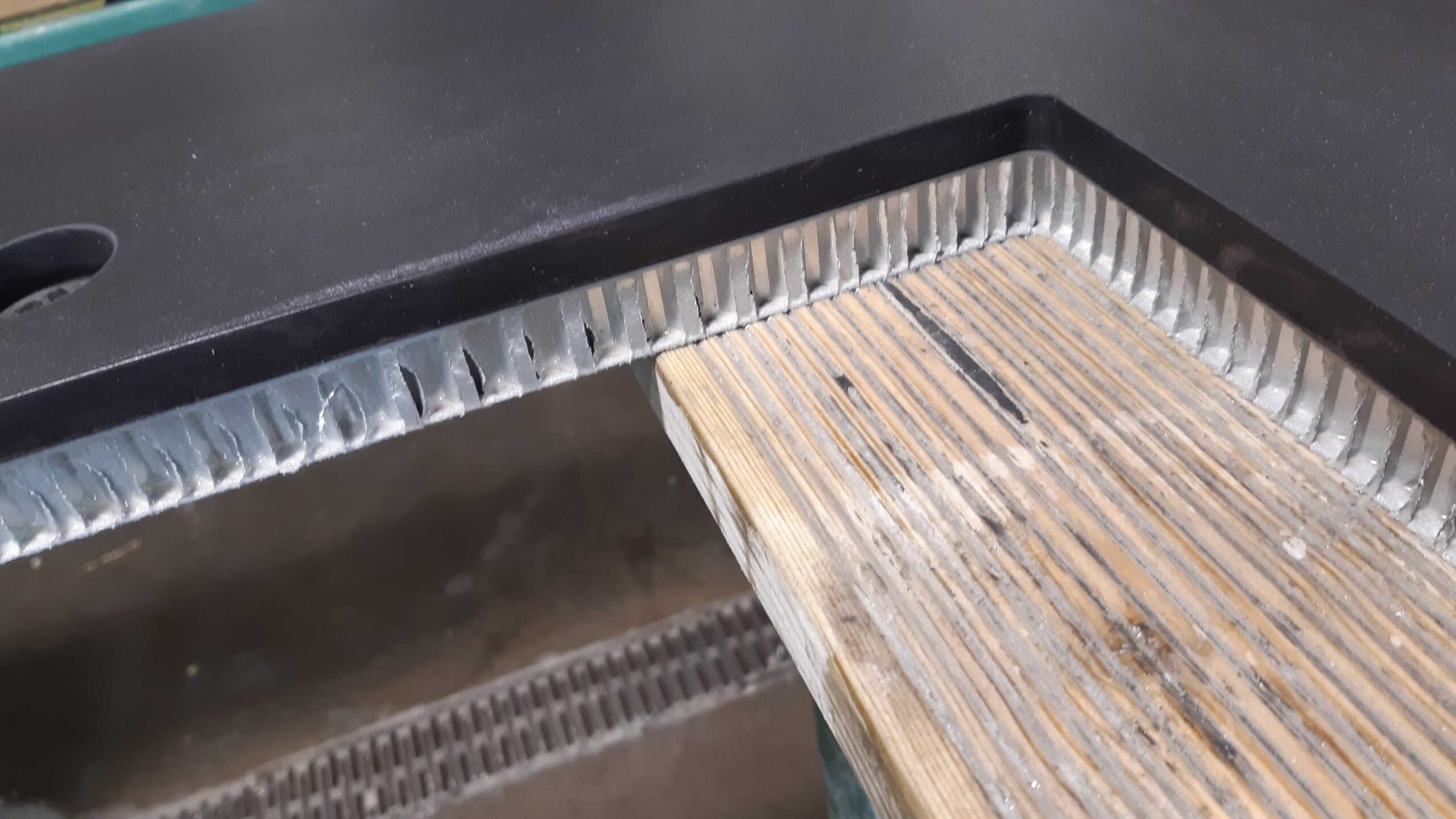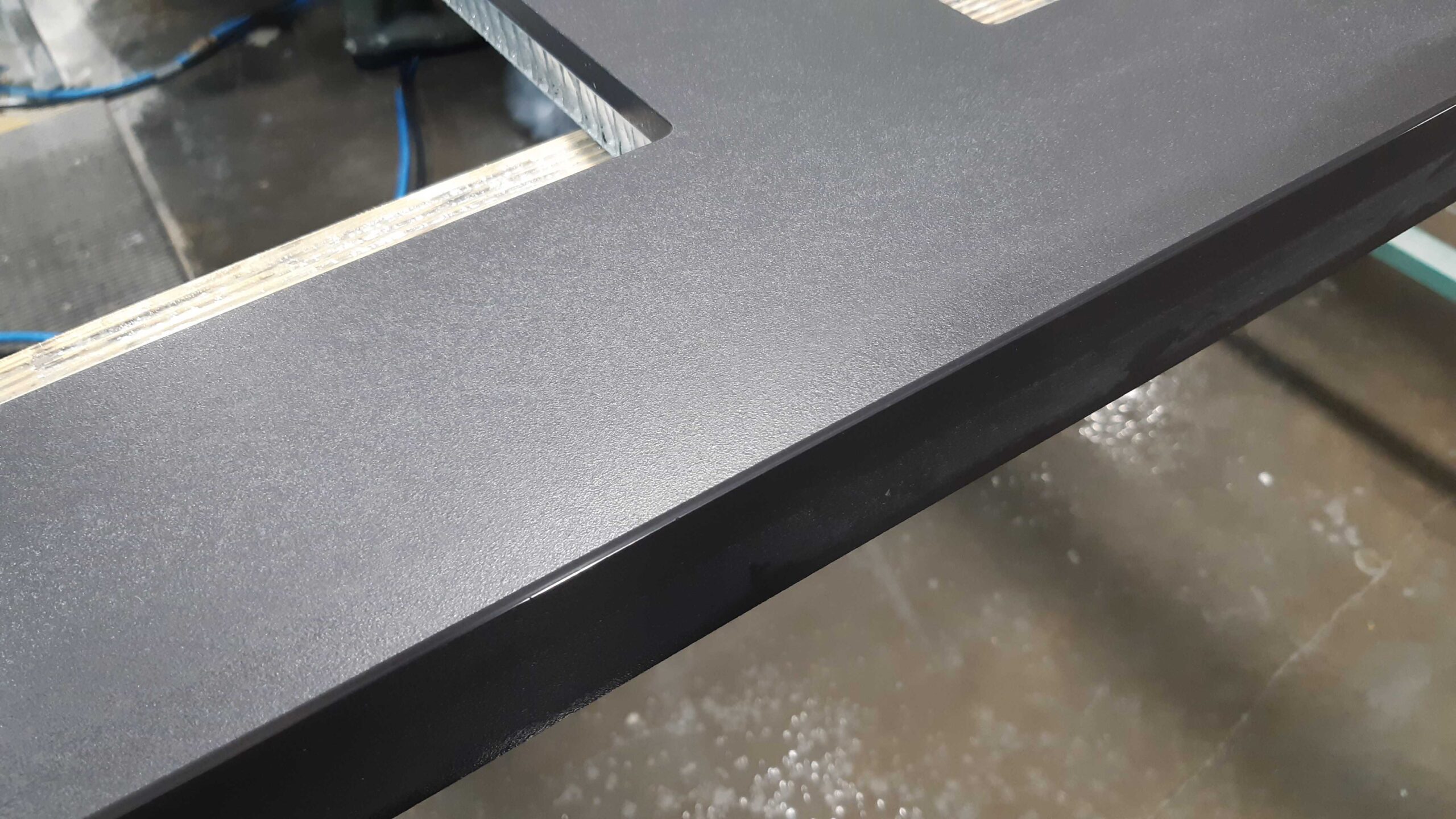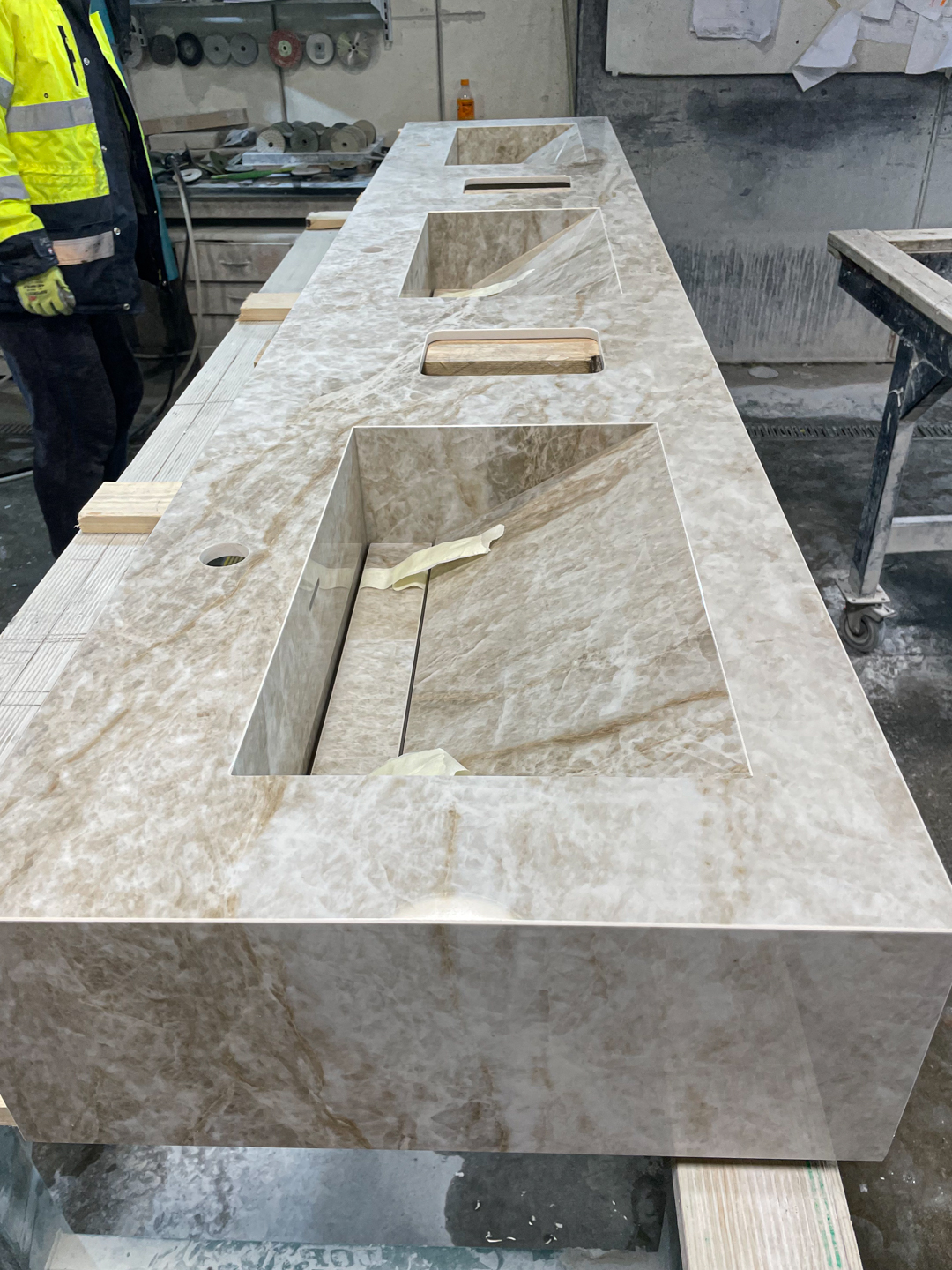
Stone weight reduction solutions
Marmi Futerno ships its stone production worldwide. Often to demanding locations like cruise ship restaurants, hotel lobbies and retail boutiques. These stones must withstand high volumes of daily use and meet the highest production and safety standards.
It is important to know which substrate can be used for which material and application.
When stone thickness is glued to 50–250 mm height, the structure may need to be built up to that thickness from a strong and lightweight substrate material.
Any minor drawback in technology application may result in a failure of the structure and a cracked stone.
Exclusive and fragile marble worktops can be reinforced with aluminum honeycomb sheets. Honeycomb substrate is the best, because it is lightweight, very strong and can withhold the heavy weight of natural stone.
In the yacht and cruise ship segment, honeycomb substrate is also used for ceramic worktops despite this material is lightweight and polystyrene foam products would be enough as a support. Honeycomb substrate technology is preferred in order to meet the anti-ignition standards.




Selection of the substrate depends on material and project application. A fragile marble on a thin ceramic slab need a substrate both for leveling reasons and to support the strength of the material. For these cases a strong non-flexible full substrate is recommended.
For residential projects honeycomb substrate often proves overly expensive, so alternative solutions are available. Even in kitchens, when stone thickness is glued up 30–60 mm, a full or a partial substrate is needed.
For stronger materials the substrate may be needed rather as a riser or lighter strength support. In that case a partial substrate is enough.
